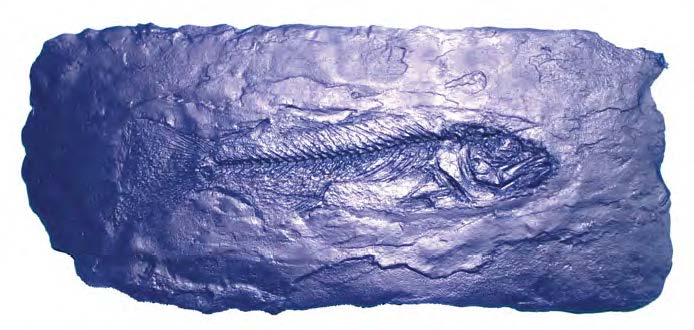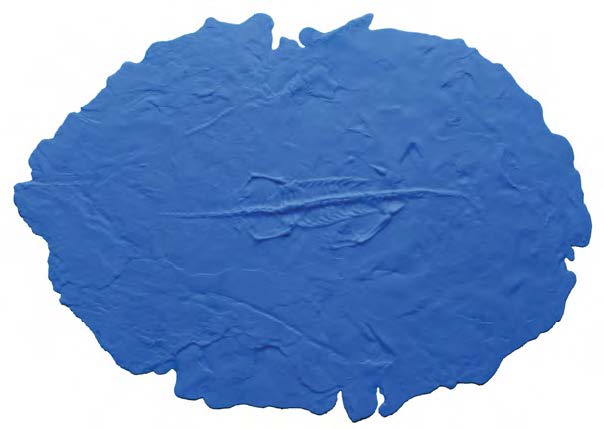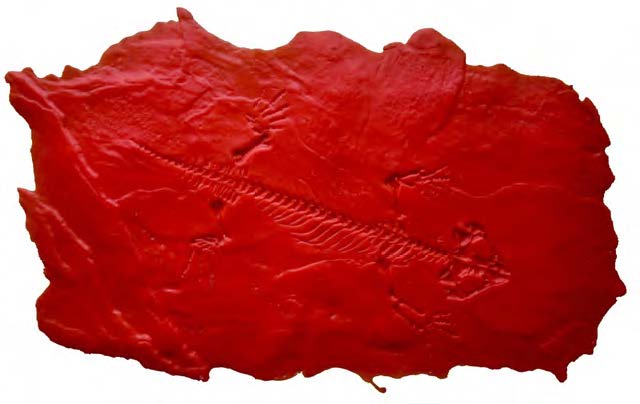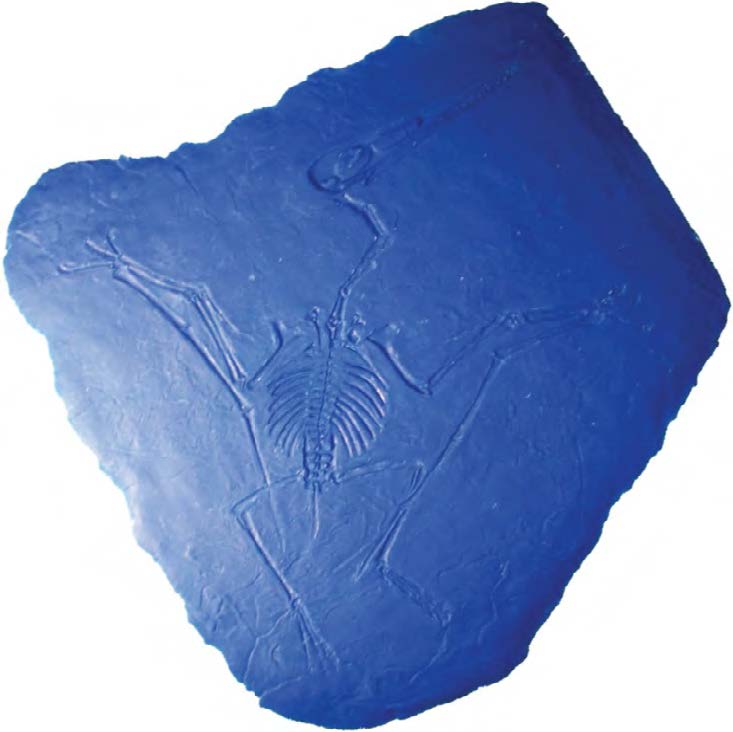Our innovative artisans at Pacific Concrete IMages have carefully researched and designed 13 new realistic and anatomically correct concrete stamping tool for replicating natural realistic fossils in freshly poured concrete. We are pleased and excited to add these additional tools to our Fossil Effects Collection thus giving the designer, builder and architect 25 standard choices of Fossil Effects to create that unique project.

This fossil fish stamp tool comes from the Green River Shale formation of Wyoming, Colorado, and Utah. 50 mil-lion years ago this area was covered by a large tropical fresh water lake teaming with an abundance of fish and aquatic life. This particular species of fish is Priscacara Liops ( pris·ca·cara li·ops ) and is quite abundant in the shale for-mation. Density of fossils in this forma-tion suggest that Priscacara swam in schools.
The concrete stamping tool has an overall size of 18” x 9” (45.7 x 22.8 cm) with a light slate texture.

This particular species of Nothosaur is known as Keichousaurus Hui ( kei·chou·saur·us hui ) and was a marine reptile, with a long serpentine neck and tail, it lived in the warm tropical waters of the Triassic Period. Keichousaurus is a genus of marine reptiles from the pachy-pleurosaur family which went extinct at the Triassic-Jurassic extinction event 201 million years ago. The name de-rives from Kweichow in China where the first fossil of this species was discovered.
The concrete stamping tool has an overall approximate size of 27” x 20” (68.5 x 50.8 cm) with a light slate texture.

Procolophon ( pro·co·lo·phon ) was a genus of lizard-like reptile, a herbivore with peg like teeth, it is quite possibly an early ancestor to all turtles and tortoises. This particular species, Procolophon Trigoniceps, was first described by Owen in1876, and survived through the Permian–Triassic extinction event, 252 million years ago and thrived into the Early Triassic Period.
The concrete stamping tool has an overall approximate size of 18” x 9” (45.7 x 22.85 cm) with a light to medium slate texture.

The late Jurassic Period,161 to 145 million years ago, had some of the most interest-ing creatures ever known. This winged carnivorous dinosaur, Pterodactyls An-tiquus ( ptero·dact·yl an·tiqu·us ) discov-ered in the Solnhofen limestone of Bava-ria, Germany and was the first pterosaur species to be named and identified as a flying reptile. The concrete stamping tool replicates the fossilized bones of this crea-ture in a positive format surrounded by a slate texture.
The concrete stamping tool has an overall approximate size of 45” x 39” (114.3 x 99 cm) with a light to medium slate texture.












